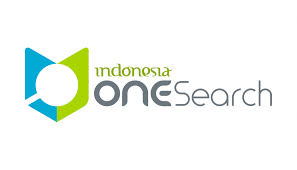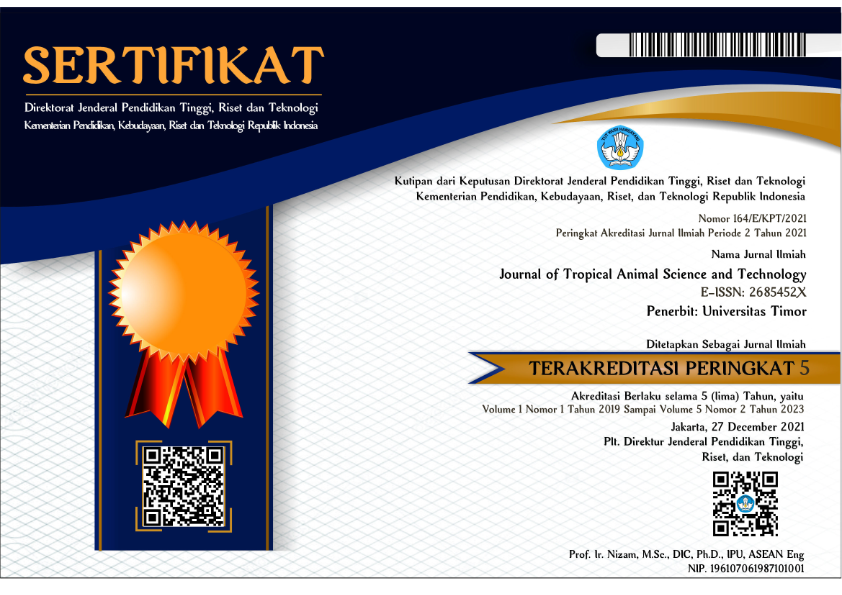MEAT AND FAT COLORS CHARACTERISTICS OF MALE BALI CATTLE FATTENED WITH GREEN FEED IN SMALLHOLDER FARMS
DOI:
https://doi.org/10.32938/jtast.v2i2.592Keywords:
Color of meat and fat, Greenlot fattening, Male Bali cattle, Smallholder farmsAbstract
The study was conducted for 3 months from March to June 2013, using nine (9) male Bali cattle aged 2.5 - 3.5 years or average 3.0 years old based on dental estimates. The initial body weight range was 227-290 kg or an average of 257.40 ± 23.60 kg. Livestock was raising carried out in the Bero Sembada Farmers Group, Laen Manen District, Belu Regency, East Nusa Tenggara. The method used was an experimental method with treatments adjusted for habits of breeders in fattening cattle, which included feed management, housing, and health. The type of feed given during the study was Centrosema pubences, Clitoria ternatea, Fresh Zea mays straw, Pennisetum purpuphoides, Leucaena leucocephala, natural grass, Pennisetum purpureum and Sesbania grandiflora. The variables measured in this study include the color of the meat and fat. Measurement of the color of meat and fat using the standard color of meat and fat issued by the Indonesian National Standardization Agency (SNI: 3932: 2008, Regarding Quality Standards for Carcass and Meat of Beef Cattle). The data collected were analyzed using descriptive statistical procedures. The results of the study showed that male Bali cattle fattened with forage produced a meat color score average of 9.00 or dark red color, while the average fat color score produced was 5.33 or yellowish-white color. It can be concluded that the characteristic color of meat from male Bali cattle fattened with forage on smallholder farms is dark red, while the color of fat is yellowish-white.























